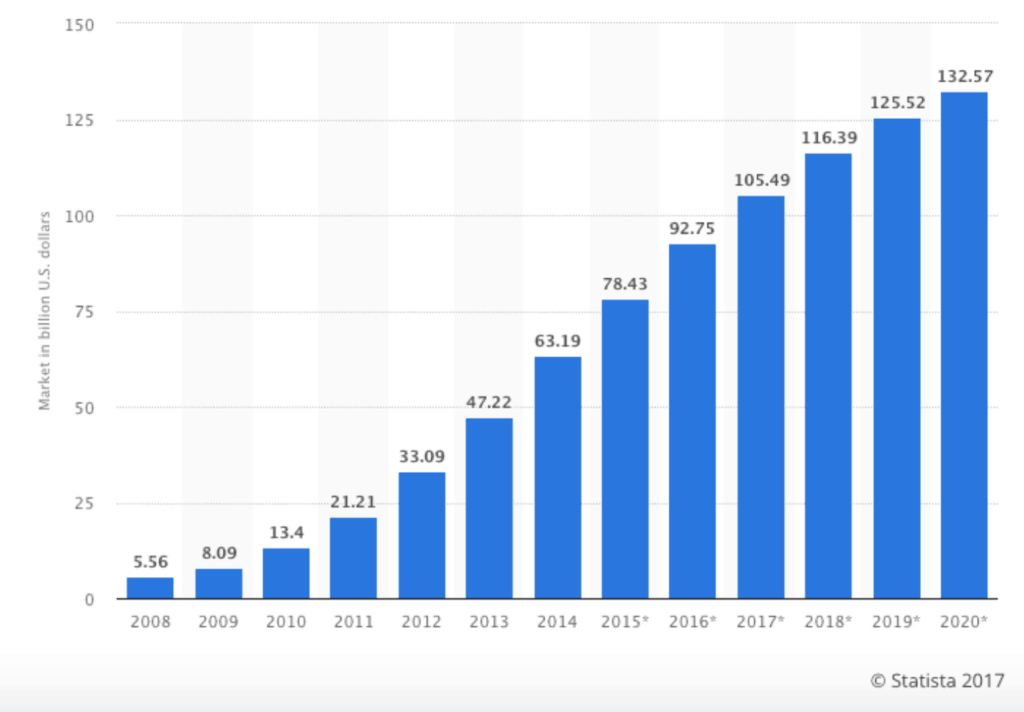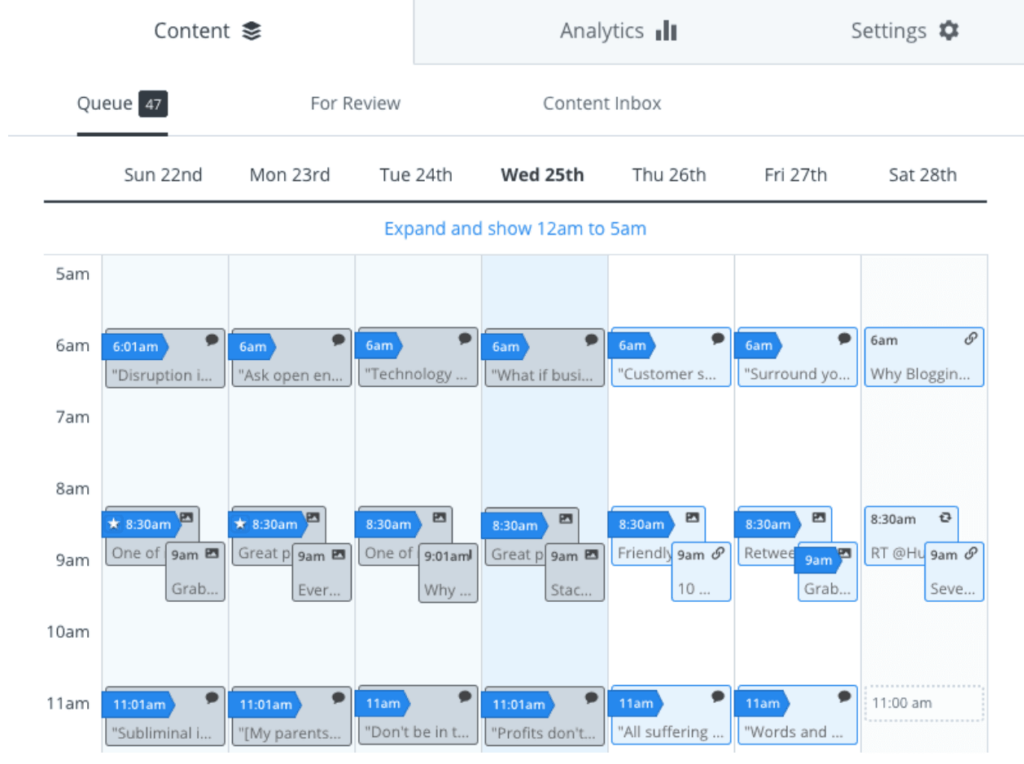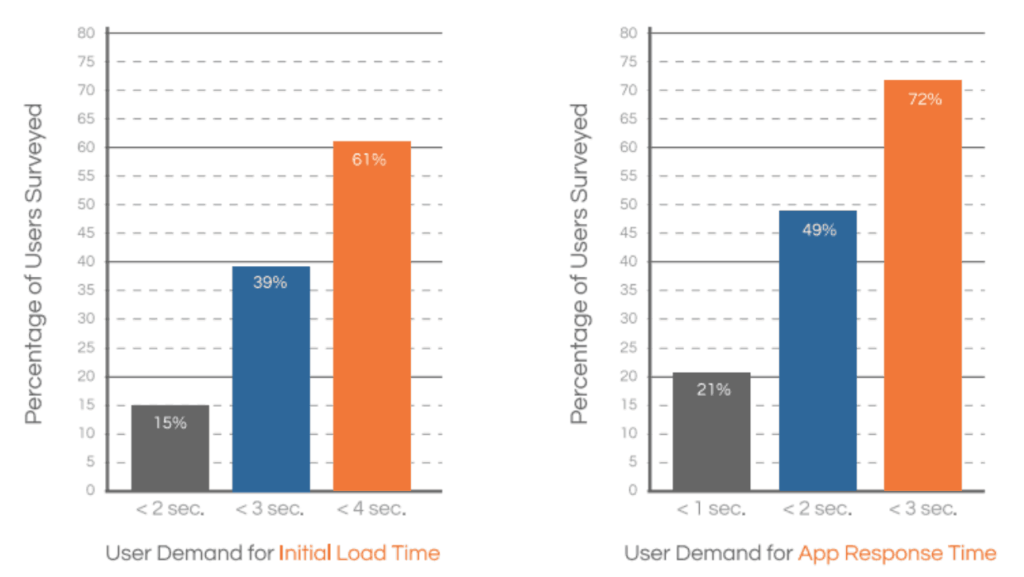The mobile SaaS market is quickly becoming impossible to ignore.
Why?
It’s projected to reach $19.7 billion this year.
The overall SaaS market has been consistently growing year over year since 2008 as well, and is projected to continue doing so, with total market size projected to exceed $130 billion by 2020:

Mobile has been a major contributor to the overall SaaS growth. In Q1 of 2015, there were 313 mobile SaaS startups that raised more than $2.6 billion in investment capital, up from 95 two years prior. This growth has the team here at MindSea excited about the work we’re doing with clients committed to excellent mobile experiences in the SaaS space.
We believe that the time to think about adding mobile to your SaaS product is now.
Mobile is no longer a trend.
In 2016, 85% of enterprise employees in the United States used a mobile device. On top of that, Neumob reveals that 80% of all employees are now considered non-desk workers.
The world is quickly becoming a mobile-first society.
The potential value a mobile app can bring to your SaaS business is huge, and it’s not solely because of these trends. If impressing your users can convert them into your greatest advocates, then any opportunity to provide additional value and make it easier to utilize your product is an opportunity you should capitalize on.
But as you make the move to mobile, don’t dive in without a plan—and the knowledge to back it. You’ll need to do research and make some key decisions upfront to ensure that users will embrace your mobile experience.
When we create a Mobile App Blueprint for clients, we ask and answer the following five questions before we start writing a single line of code. Ask yourself these same questions to ensure your transition into mobile is a smooth one.
1. What is your product’s core offering?
The very first thing you need to understand before building a mobile app for your SaaS product is what people are actually looking to get out of said product. Even if you have a handful of awesome features that your users love, what’s the one thing they rely on you most for?
Is there a specific feature your customers truly love? Is there a function that customers have told you they wish they could use on the go? Is there a task that would be a perfect fit for a mobile experience but is currently limited to desktop?
Once you understand your core offering, you then have to decide how a mobile app fits into that offering.
The core offering at companies like Buffer is the ability to schedule social media posts in advance. On their desktop version, Buffer has a detailed calendar view, a power scheduler and a handful of other features to help their users maximize the tool.

But the Buffer mobile app focuses mainly on the core features of the tool: the actual scheduling of social media messages and the management of the message queue.
Since you’re working with a smaller screen and different functionality, you don’t need to deliver every single feature of your desktop product to your mobile users. One one of the main hiccups SaaS companies face when they try to go mobile is the desire to include absolutely everything. They tell themselves that if their desktop app does it, their mobile app should too. The reality is this:
Your mobile app does not need to do every single thing your desktop version does.
If your SaaS product is deep with features, trying to fit every single one of those features into a mobile app is going to be tough. Since you already have a solid understanding of your core value offering, focus on delivering that functionality to your users first and foremost. Why?
Having more features leads to slower load times and a clunky UX.
A study from Dimensional Research found that users expect your mobile app to load in four seconds or less, and they expect every action after that to happen in three seconds or less.

As all SaaS founders know, user experience can make or break everything. If a user has a hard time navigating your platform, they’re going to be tough to win back. A major killer on this front is slow load times, especially on mobile.
2. Can you position your app as a value add?
Building a mobile app carries massive potential for your SaaS business. It brings new opportunities to add value to your user, a goal that should always be top-of-mind.
Digging back into Buffer—their mobile app adds significant value on the Instagram scheduling front. As it stands, Instagram still requires users to manually share every post. Once a post is scheduled in Buffer, the app sends users a push notification when it’s time to post; all the user has to do is open the notification and tap the post button.
Even though Buffer left a handful of desktop features out of the app, they worked in awesome mobile-only functionality that turned their mobile app into an asset, not just a convenience.
Factor in the new mobile opportunities popping up by the day, and the potential value an app can add to your SaaS company is massive. Since Apple launched the new iOS with ARKit functionality, businesses have been able to tap into augmented reality features within their mobile apps—something your desktop app simply can’t do.
Of course, AR is just one of many exciting mobile developments and opportunities businesses have to work with going forward. Geofencing, mobile wallets, and other recent innovations all have massive potential for your SaaS app. The only question here is how you want to leverage these opportunities.
3. Do you have the bandwidth to build an app?
Building a mobile version of your SaaS app is no small task. You can’t just tell one of your developers to take a day or two to whip it up. Building a mobile app requires a dedicated team focused on bringing these big ideas to life.
For SaaS companies, especially startups, resources are often tight. It’s important to keep this in mind as you plan the development and launch of your app.
When creating your app, you’ll need to consider the various elements that make up a mobile app’s tech stack.
If you’re not familiar with what goes into a mobile app tech stack, then you’re likely not the person who is going to be writing and building the app. Thus, you’re going to have to determine what the best solution is for creating and building a team that can prototype, design and build your app.
4. Will you outsource or build in-house?
Unfortunately, this question isn’t as straightforward as you might like. There are plenty of factors at play, the biggest being the bandwidth conversation above.
As it stands, you’re already managing the original desktop app for your SaaS product. Are you in a position to shift your team and resources around to build a mobile version without letting the core product fall by the wayside?
If the answer is yes, then building in-house may be the right call for you and your business. You may even be in a position to hire additional developers and designers to spearhead the mobile app creation. For most SaaS companies though, outsourcing may be the better plan of action. Costs will be lower, and you’ll be able to keep your resources focused on your core product.
It’s definitely a big decision to make, and we’ve put together a great free resource to help you navigate it. Check out the guide and feel free to reach out if you’re looking for more.
5. Should you start with Apple, Android or both?
The final question you have to ask yourself is whether you’re going to build your app for a single operating system or both Android and Apple. The reason this is important is that someone who specializes in iOS development isn’t necessarily going to be an expert in Android app development. Recognizing this early on can save you some serious headaches and also prompt a dialogue and research stage to help you determine which operating system your target audience is using the most.
Wrapping Things Up
Building a mobile app for your SaaS business is an opportunity that could change the way your audience uses your product. Factor in the massive mobile market you’ll be able to tap into and it becomes near impossible to ignore the conversation.
Just make sure to start with your core offering. Understand why your users would want to download your app in the first place, and what they would primarily use it for. From there, identify your opportunities to add massive mobile value and get to work.
If you’re ready to invest in a mobile app for your SaaS company, we’d love to help you bring it to life. Get in touch with us today and we’ll walk you through the next steps in accomplishing your company’s mobile goals.
What else is important to know when navigating the mobile SaaS world? Drop a comment and let us know!



